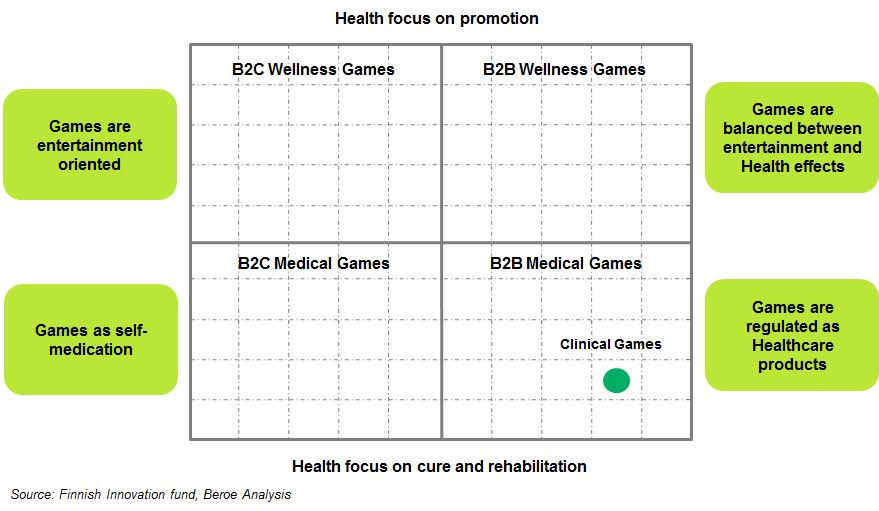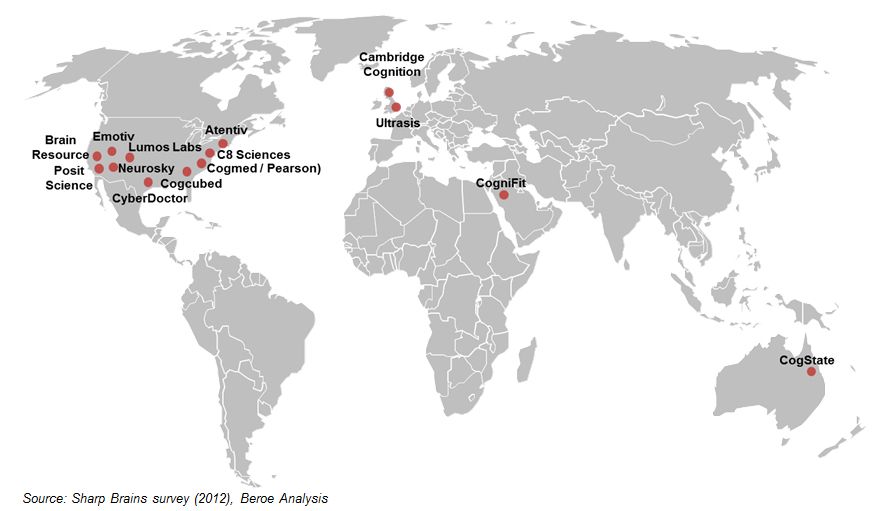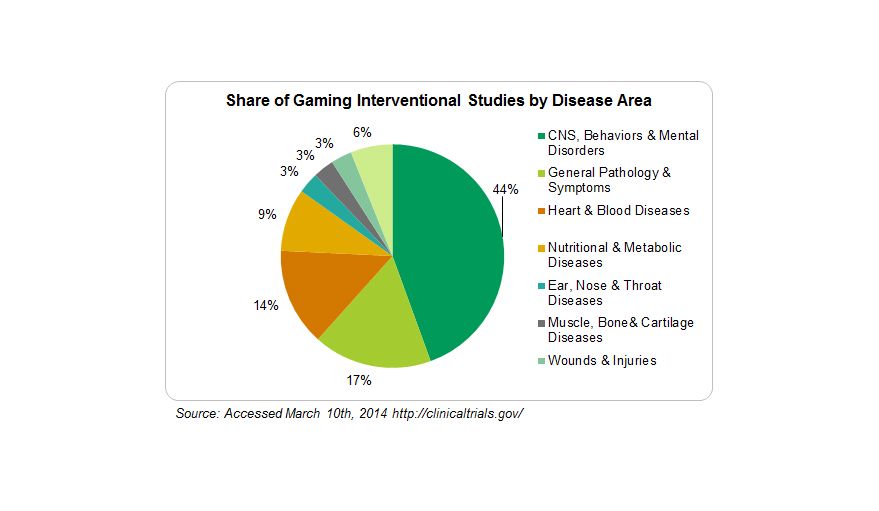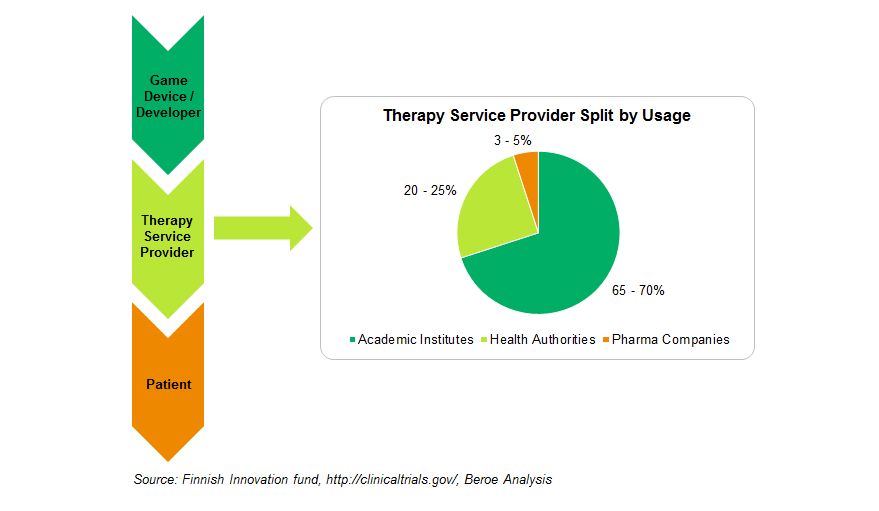Transforming Cognitive Health Conditions through Clinical Games
As clinical games emerge as a new tool for diagnosing and treating cognitive health, it is important to understand how these tools work and the ways in which these tools are validated, as well as how to realize their full potential.
As clinical games emerge as a new tool for diagnosing and treating cognitive health, it is important to understand how these tools work and the ways in which these tools are validated, as well as how to realize their full potential. The FDA started watching this trend in 2007 and in 2013 released guidelines surrounding the use of medically relevant software. According to the FDA, when stand-alone software is used to analyze medical device data, it has traditionally been regulated as an accessory to a medical device or as medical device software.1
Following this, more clinical trials were conducted centering on e-games or apps, which is typically called gamification. Approximately 35% of the studies involving the impact of gaming on cognitive heath were aimed at nervous system diseases such as Alzheimer’s, Parkinson’s etc.2 The observation of such studies was largely conducted by universities and research institutes. And the vast majority of these applications feature continuous usage over the trial periodand boost adherence by 25% to 40%.
Background on Non-Adherence
Patient non-adherence to treatment regimens is an ongoing problem in the practice of medicine. Cognitive disorders pose additional challenges that increase the risk of non-adherence. NEHI Research estimated that in the United States alone, patient medication non-adherence accounts for up to $290 billion in excess healthcare costs annually.4 Specifically, in cognitive disorders, such as non-adherent Parkinson’s patients, the total medical cost is significantly higher, $15,826 versus $9,228, with far less money spent on prescription drugs.16 In addition, non-adherence rates in Parkinson’s range from 15% to 67%. The consequences of non-adherence include worsening quality of life, dyskinesias, and diminished mobility. While a portion of non-adherence in this population is driven by comorbidities (studies show 30% to 40% of Parkinson’s patients also suffer from dementia), there is still significant room to improve adherence and thereby improve quality of life in a cognitive health disease.10
In epilepsy, a similar trend is present. Non-adherent patients-ranging between 30% to 50%-have total healthcare costs close to an additional $3,000 than Parkinson’s, and less spending on medication. Poor adherence contributes to about 31% of seizures in patients who are diagnosed and on treatment for epilepsy.11 Non-adherence results in an immediate decrease in quality of life for epileptic patients. In this case, improving adherence could benefit quality of life and long-term cognitive health by potentially decreasing the number of life threatening seizures a patient experiences.12 Improving non-adherence in these groups can also improve mental health.
Non-adherence also complicates clinical trial research. If patients fail to adhere to their treatment regime, the data for that clinical trial must be readjusted by statistical methods, which can confound the results. With payers increasingly requiring health outcomes research that demonstrates a product’s benefit and value, this non-adherence can be a problem. Therefore, pharmaceutical companies have expressed interest in improving non-adherence, and medical games/apps can enable them in doing so.5
Health e-Games Market
The global games market for 2014 is valued at approximately $75.2 billion USD and is estimated to reach $86.1 billion growing at a CAGR of 6% to 7%, according to PWC and Reuters.6 Health eGames is a rapidly expanding new market segment of gaming that incorporates elements of three different markets: casual games, serious games, and exercise games. The casual games market is estimated to be $5 to $6 billion in 2014, according to Casual Games Association. The casual games market comprises fun and easy games that can be played across platforms. Serious games constitute approximately $2 to $5 billion of the market, focusing on gaming applications used for performance improvement, education and training. Exercise games comprise an approximate market of $6 to $7 billion, involving interactive physical motion and fitness games. Health eGames reside at the intersection of the above segments. It constitutes an estimated market size of $11 to $12 billion, or 15.7% of the overall gaming market.7
As per the Finnish Innovation fund’s Health eGames Market grid, there are four characteristics of games as shown in Figure 1. Casual games would fall under the wellness games category whereas serious games and few exercise games fall under the medical games category. Some of the medical games have been validated through clinical research and have shown positive results on the impact of human health such as cancer, asthma, diabetes and cognitive disorders.8 These games would fall under the B2B Medical games and are termed as ‘clinical games’ as they may be used as a biomarker in clinical trials.

Clinical games have been shown to influence patient behavior, particularly behavior surrounding adherence and cognitive health. Groups such as CogCubed, Cogmed, Akili, Hope Labs, CyberDoctor etc., have developed products that have showed increased adherence through gameplay.
Clinical games that improve cognitive health are part of the digital brain health market. As of 2013, this market is valued at $1.3 billion. It is expected to grow four-fold by 2020 to $6 billion.13 This growing market has attracted a number of medical game/app developers to enter into this segment, and include Akili Interactive Labs, Brain Resource, CogCubed, Cogstate CT, CyberDoctor, etc. Refer Figure 2.

Clinical Trials Potential
More than 80 studies involving gaming were conducted in 2013; 76% were conducted in North America.Clinical games, as a new technological trend, have more traction in North America and Europe, versus other still developing markets.2 This directly relates to the majority of supply base being located in North America.
Figure 3 below shows the share of gaming interventional studies by region.

In terms of therapeutic area, approximately 40% to 45% of medical games focus on CNS, behaviors and mental health diseases. 2 These games focus on improving cognitive health through play.
Figure 4 below shows the share of gaming interventional studies by disease area.

If a medical game is provided to patients in a clinical trial, the game must follow the process below to attain regulatory approval from the FDA as shown in Figure 5.

At CyberDoctor, a company focused on improving adherence through the use of a behaviorally based game technology, its app (PatientPartner) has been shown in an independent clinical trial to increase medication adherence by 37%. PatientPartner addresses the problem of poor adherence by using story-based gameplay and targeted improvement modules to create a powerful, but brief intervention. Within clinical trials using PatientPartner, patients reported that in conjunction with their increased adherence, they also had increased awareness about their health and the consequences of their healthcare choices. In a clinical trial setting, the PatientPartner approach could ensure that all patients achieve high levels of compliance with the drug or therapy being tested.
Figure 6 below shows the screenshot of PatientPartner

Evo is a game application developed by Akili Interactive Labs that can be used to diagnose mental disorders such as ADHD, Alzheimer’s, autism and depression. Flying objects in the game act as distractions, making the player engage in multitasking. In effect, the game measures the person’s ability to multitask in the face of distractions as well as general cognitive capacity. Akili, along with Shire Pharmaceuticals, is undergoing a three-site Phase I clinical trial in pediatric ADHD. This study is looking at the game as a potential therapeutic for ADHD and wants to see if patients improve performance on the game and improve cognition.14
A study conducted by Adam Gazzaley, Co-Founder and Chief Science Advisor of Akili, found that its game called NeuroRacer can help older people to improve their capacity to multitask, with the effect carrying over to tasks in everyday life and continuing effects after six months. Certain cognitive abilities--working memory and sustained attention--that were not explicitly targeted by the game improved and remained improved. The study also shows how patterns of brain activity change as those cognitive skills improve.15
Pfizer has recently partnered with Akili to use its video game platform – 'Project Evo', to detect cognitive differences in healthy elderly people at risk of developing Alzheimer's disease.18 A clinical trial in Alzheimer's disease with 100 elderly participants with and without known risks would be conducted over a one-month period. The goal of the study is to determine if the game can be used as a biomarker for future trials on Alzheimer's.19 Pfizer’s Chief Scientific Officer of Neuroscience Research Unit commented that tools that enable cognitive monitoring for the selection and assessment of clinical trial patients has the potential to be an important advance in Alzheimer’s research and beyond.20
Mathini Ilancheran is a Senior Research Analyst, with Beroe Inc, Chennai, India, and Akhila Satish is CEO & Founder of CyberDoctor, San Francisco, California
References:
- FDA. "Mobile Medical Applications." http://www.fda.gov/. September 25, 2013. http://www.fda.gov/downloads/MedicalDevices/.../UCM263366.pdf
- ClinicalTrials.gov. ClinicalTrials.gov. 2009 - 2014.http://www.clinicaltrials.gov/
- Kato, P. M., Cole, S. W., Bradlyn, A. S., & Pollock, B. H. (2008). A Video Game Improves Behavioral Outcomes in Adolescents and Young Adults With Cancer: A Randomized Trial. Pediatrics.http://pediatrics.aappublications.org/content/122/2/e305.abstract
- Orszag, Jonathan, and Kevin Green. "The Economic Benefits of Pharmacy Benefit Managers." http://www.sec.gov. December 5, 2011. http://www.sec.gov/Archives/edgar/data/1170650/000095012311101989/y93719exv99w2.htm
- Cuttingedgeinfo. (2014). Mobile Apps Fight Patient Non-Adherence.Cuttingedgeinfo.http://cuttingedgeinfo.com/mobile-apps-fight-patient-non-adherence-2/
- Nayak, Malathi. "FACTBOX - A look at the $66 billion video-games industry." Reuters. June 10, 2013. http://in.reuters.com/article/2013/06/10/gameshow-e-idINDEE9590DW20130610
- Intelligent Living Inc. Market Wired. December 12, 2013. http://www.marketwired.com/press-release/intelligent-living-inc-iliv-go-head-head-with-lumosity-66-billion-brain-fitness-arena-otcqb-iliv-1861697.htm
- Kaleva, Jari-Pekka, KoopeeHiltunen, and Suvi Latva. Mapping the full potential of the emerging health game markets. Sitra Studies, 2013.http://www.sitra.fi/en/julkaisu/2013/mapping-full-potential-emerging-health-game-markets
- Fleisher, J. E., & Stern, M. B. (2013). Medication Nonadherence in Parkinson’s Disease. Current Neurology and Neuroscience Reports.http://link.springer.com/article/10.1007%2Fs11910-013-0382-z
- Sweileh, Waleed M, et al. "Self-reported medication adherence and treatment satisfaction in patients with epilepsy." Epilepsy & Behavior, 2011: 301 - 305.http://www.ncbi.nlm.nih.gov/pubmed/21576040
- Jones, R. M., Butler, J. A., Thomas, V. A., Peveler, R. C., & Prevett, M. (2006). Adherence to treatment in patients with epilepsy. Elsevier, 504-508.http://www.seizure-journal.com/article/S1059-1311(06)00120-8/abstract
- Sharp Brains survey. (2012). Market Intelligence: Digital Platforms for Brain Training and Cognitive Assessment. Retrieved 2014, from http://sharpbrains.com/: http://sharpbrains.com/market-report/
- Pai , A. (2014, January 9). Video game maker partners with Pfizer for Alzheimer’s clinical trial. http://mobihealthnews.com/28429/video-game-maker-partners-with-pfizer-for-alzheimers-clinical-trial/
- Abbott, A. (2013). Gaming improves multitasking skills. Nature.http://www.nature.com/news/gaming-improves-multitasking-skills-1.13674
- KL, Davis, Edin HM, and Allen JK. "Prevalence and cost of medication nonadherence in Parkinson's disease: evidence from administrative claims data." MovDisord, 2010: 474-480.http://www.ncbi.nlm.nih.gov/pubmed/20131374
- KL, D., Ettinger, A., Manjunath, R., Candrilli, S., & Davis, K. (2009). Prevalence and cost of nonadherence to antiepileptic drugs in elderly patients with epilepsy. NCBI .http://www.ncbi.nlm.nih.gov/pubmed/19028602
- Akili Interactive Labs. (2014, January). Akili Interactive Labs. Retrieved 2014, from Akili Interactive Labs: http://www.prnewswire.com/news-releases/akili-interactive-labs-announces-partnership-with-pfizer-to-test-video-game-in-people-at-risk-of-alzheimers-disease-239412291.html
- Medcity News. (2014, January 9). In gamification milestone, Pfizer will assess video game in clinical trial for Alzheimer’s disease. Retrieved 2014, from Medcity News: http://medcitynews.com/2014/01/gamification-milestone-pfizer-will-use-video-game-clinical-trial-alzheimers-disease/#ixzz2puZh0nbD
- Akili Interactive Labs. (2013). Retrieved 2014, from Akili Interactive Labs: http://www.akiliinteractive.com/press_release_1.9.14.php
- PhRMA. Improving prescription medicine adherance is key to better health care. Washington, D.C: PhRMA, 2011.
How Digital Technology and Remote Assessment Strategies Can Aid Clinical Trial Research
July 24th 2020While there's been hopeful news on treatments and vaccines, sponsors should plan to discuss necessary strategies and contingencies at the outset of new studies or re-opening of halted studies during the COVID-19 pandemic.